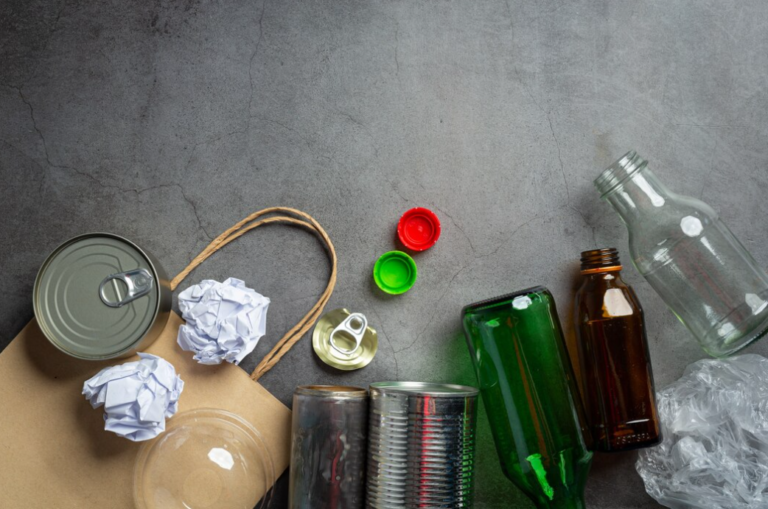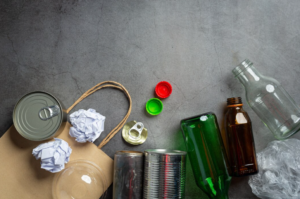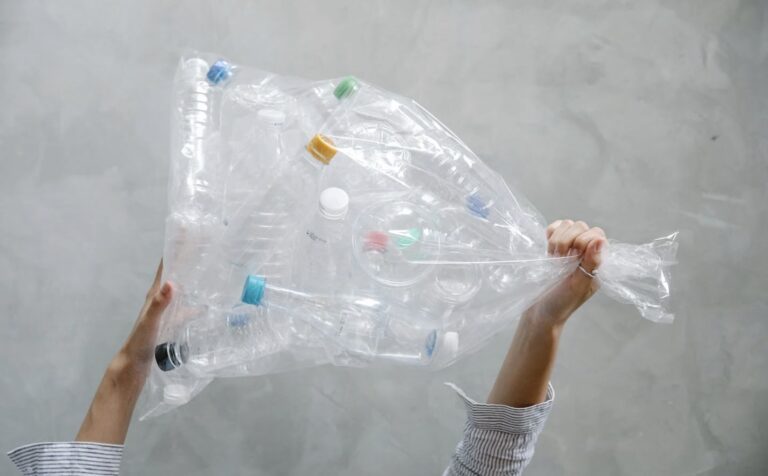Starting from September 2012, the Recycling and Education Program Coordinator has penned a recurring column for The Daily Citizen. Named “Recycle & Reuse”, the series aims to familiarize readers with efficient waste management, recycling practices, and sustainable living. Appearing every alternate Wednesday in the Living Section, the column is also available on The Daily Citizen’s website. Reader engagement is encouraged through topic suggestions and queries via the Contact Us page.
The Amazon’s recent catastrophic fires remind us of the importance of resource preservation. Dalton, taking heed of this lesson, recorded an impressive 124.8 tons of recycling last July, marking its highest monthly achievement since April 2014.
Recycling’s Deep-rooted Impact on Forests
Recycling involves reprocessing used goods to fabricate new ones. Distinct from trash, recyclables are sent to industries specializing in eco-friendly production. Recycling conserves energy, water, and raw materials—many of which might otherwise come from critical rainforest zones.
Predominantly, persistent deforestation is attributable to logging. Reducing paper demand through recycling can thus deter it. Imagine if Dalton’s entire recycled waste in July were paper. That translates to preserving 2,122 trees or 53 acres of forest, capable of sequestering over 101,000 pounds of carbon annually.
Rainforests also suffer from bauxite mining—essential for producing aluminum cans. Distinct from other mining types, bauxite extraction ravages large surface areas, annihilating entire forests. Recycling aluminum, though, can eliminate this need. Moreover, recycled aluminum production consumes 95% less energy than sourced from fresh bauxite.
Tapping into the Untapped: The City of Dalton’s Recycling Potential
In Dalton, recycling begins at home. Yet, only half of its residents actively participate. This implies a staggering 50% of potential recyclables remain uncollected. Every resident should ideally possess both a garbage cart and one to three blue recycling bins. Should you lack a recycling bin, simply reach out to the public works at (706) 278-7077.
Recycling Specifics: What Goes in and What Stays Out
The blue bins accept a variety of materials: paper, cardboard, glass, aluminum, bi-metal cans, and specific plastics. While labels and caps are permissible, ensure cleanliness to avoid contamination. Items stained with food residues or crafted from waxed materials aren’t suitable. Beginning October 1st, the bins won’t accept glass, although alternative disposal methods remain. Another sustainability avenue is recycling old cellphones at the Old Dixie Highway Convenience Center.
The Broader Landscape: Wood and Paper Recycling Around the World
Wood remains a highly reusable material. Salvaged from various sources, it finds renewed purpose in contemporary interiors, from plush furniture to exquisite flooring. Even diminutive wood remnants have value, serving as raw materials for composites.
Paper recycling also holds promise. Remarkably, in 2010, 53% of the world’s paper production relied on recuperated paper, a marked rise from 43% in 2000. Despite escalating paper demands, judicious recycling can minimize our dependence on virgin wood.
Benefits of Recycling: A Bullet Point Overview
- Conservation of Resources: Decreases the need for virgin materials like wood and minerals;
- Energy Savings: Recycling processes typically use significantly less energy compared to processing raw materials;
- Reduction of Greenhouse Gases: Fewer carbon emissions mean a healthier planet and reduced global warming;
- Landfill Space Conservation: Reduces the strain on landfills and decreases ground pollution;
- Economic Growth: Boosts local economies by creating green jobs in recycling and manufacturing industries;
- Protection of Ecosystems: Reduces the need for resource extraction, preserving natural habitats and biodiversity.
Recycling: A Comparative Analysis
| Materials | Energy Saved by Recycling | Equivalent to |
|---|---|---|
| Aluminum | 95% less energy | Powering a TV for 3 hours |
| Glass | 30% less energy | Powering a computer for 30 minutes |
| Paper | 40% less energy | Powering a 60-watt bulb for 6 hours |
| Plastic | 70% less energy | Powering a smartphone for a week |
The Global Recycling Landscape
In the global context, recycling plays a pivotal role in driving sustainable economies. The European Union, for example, has made significant strides in its recycling practices. According to recent statistics, Germany leads the pack with a staggering recycling rate of over 56%. This impressive figure is the result of efficient waste management practices, stringent policies, and the promotion of a recycling culture.
Moreover, countries like Sweden have implemented waste-to-energy programs. Here, non-recycled waste is not dumped into landfills. Instead, it’s incinerated to produce energy. This dual-purpose strategy both disposes of waste effectively and harnesses it as a renewable energy resource.
However, recycling is not just about conserving resources. It’s also about reshaping the global economy. The green economy, which encompasses sectors like renewable energy, green buildings, and sustainable transport, hinges significantly on recycling. As countries pivot towards sustainability, recycling will likely emerge as a core component of national economic strategies.
The Future of Recycling: Innovations and Opportunities
The world of recycling is continuously evolving, brimming with innovations and opportunities. Recent advancements include enzyme-driven plastic recycling, where specific enzymes break down plastics to their original components, allowing for more effective recycling.
Furthermore, Artificial Intelligence (AI) and robotics have made their foray into recycling. Advanced sorting robots, equipped with AI, can identify and sort recyclable materials more efficiently than humans, increasing the output quality and minimizing errors.
However, while these technological advancements are noteworthy, grassroots initiatives also hold immense potential. Community-driven recycling programs, school recycling drives, and local incentives can play a significant role in boosting recycling rates.
Ultimately, the future of recycling hinges on a blend of advanced technology and community engagement. As the global community becomes more aware of the environmental challenges facing our planet, the emphasis on recycling will only grow, presenting numerous opportunities for innovation and collaboration.
Recycling’s Role in Job Creation and Economic Advancement
While the environmental advantages of recycling are widely acknowledged, its economic impact is equally impressive. According to a report by the U.S. Environmental Protection Agency, recycling and reuse activities in the country provided 757,000 jobs and produced $36.6 billion in wages in a single year.
Recycling is not just a mechanism for waste reduction; it’s a dynamic system that promotes economic growth. When individuals recycle, they supply valuable raw materials to the manufacturing industry. This cyclical process spurs production, leading to job creation in various sectors, including collection, processing, and sales. Beyond the traditional notion of ‘green jobs’, recycling paves the way for professions across the spectrum, from transportation specialists to technological experts.
Moreover, the economic benefits of recycling transcend national boundaries. Developing countries, with burgeoning populations and increasing waste challenges, can harness recycling as a tool for economic upliftment. By establishing and streamlining recycling systems, they can tap into a vast reservoir of resources, turning waste into wealth and propelling their economies forward.
Tackling Modern Waste: E-Waste and its Recycling Implications
In the digital age, with rapidly evolving technology and gadgets, a new waste challenge has emerged: Electronic Waste or E-Waste. This category includes discarded electronic appliances like computers, office electronic equipment, entertainment device electronics, mobile phones, television sets, and refrigerators.
E-Waste is particularly concerning because it contains harmful components like lead, cadmium, beryllium, or brominated flame retardants. When not disposed of properly, these can seep into the ground, contaminating water and soil, posing severe health risks.
However, with challenges come opportunities. E-Waste contains valuable materials like gold, silver, copper, and rare earth metals. Efficient recycling of E-Waste can recover these precious metals, reducing the need for mining and the associated environmental impact.
Several countries have now initiated E-Waste recycling programs, aiming to harness the economic potential while mitigating environmental harm. With proper regulation, investment in technology, and public awareness campaigns, E-Waste can transition from being a looming threat to a substantial opportunity, encapsulating the very essence of recycling – transforming challenges into solutions.

The Circular Economy: A Vision Beyond Recycling
As we venture further into the 21st century, the importance of developing a sustainable economy becomes ever more apparent. Enter the concept of the ‘Circular Economy.’ This model shifts away from the conventional ‘take, make, dispose’ system of production and consumption to one that is regenerative by design.
At the core of the circular economy is the principle of ensuring a product’s maximum utility throughout its life cycle. This means products are designed for longevity, can be easily repaired or upgraded, and once they reach the end of their life, their materials can be seamlessly reintroduced into the production cycle.
While recycling is a vital aspect of this model, the circular economy extends its vision further:
- Rethinking Product Design: Products in a circular economy are fashioned not just with aesthetics or functionality in mind, but also their post-use phase. This includes designing for easy disassembly or material recovery;
- Promoting Repair and Reuse: Instead of discarding faulty products, the emphasis is on repair. Similarly, second-hand markets flourish, ensuring products get a new lease on life;
- Responsible Consumption: Consumers become more than passive buyers; they become active participants, opting for sustainable choices, whether that’s renting instead of buying or choosing products made from recycled materials.
By integrating the principles of the circular economy, we can envision a future where waste becomes a term of the past, and sustainability is not just an aspiration but a tangible reality.
Conclusion
Partaking in recycling, be it by sorting your recyclables or taking them to a collection point, has implications beyond our immediate environment. Our collective effort can aid in the preservation of distant rainforests. Through advanced recycling techniques, responsible consumption, and innovative product design, we can fashion products with minimal environmental footprints.







+ There are no comments
Add yours